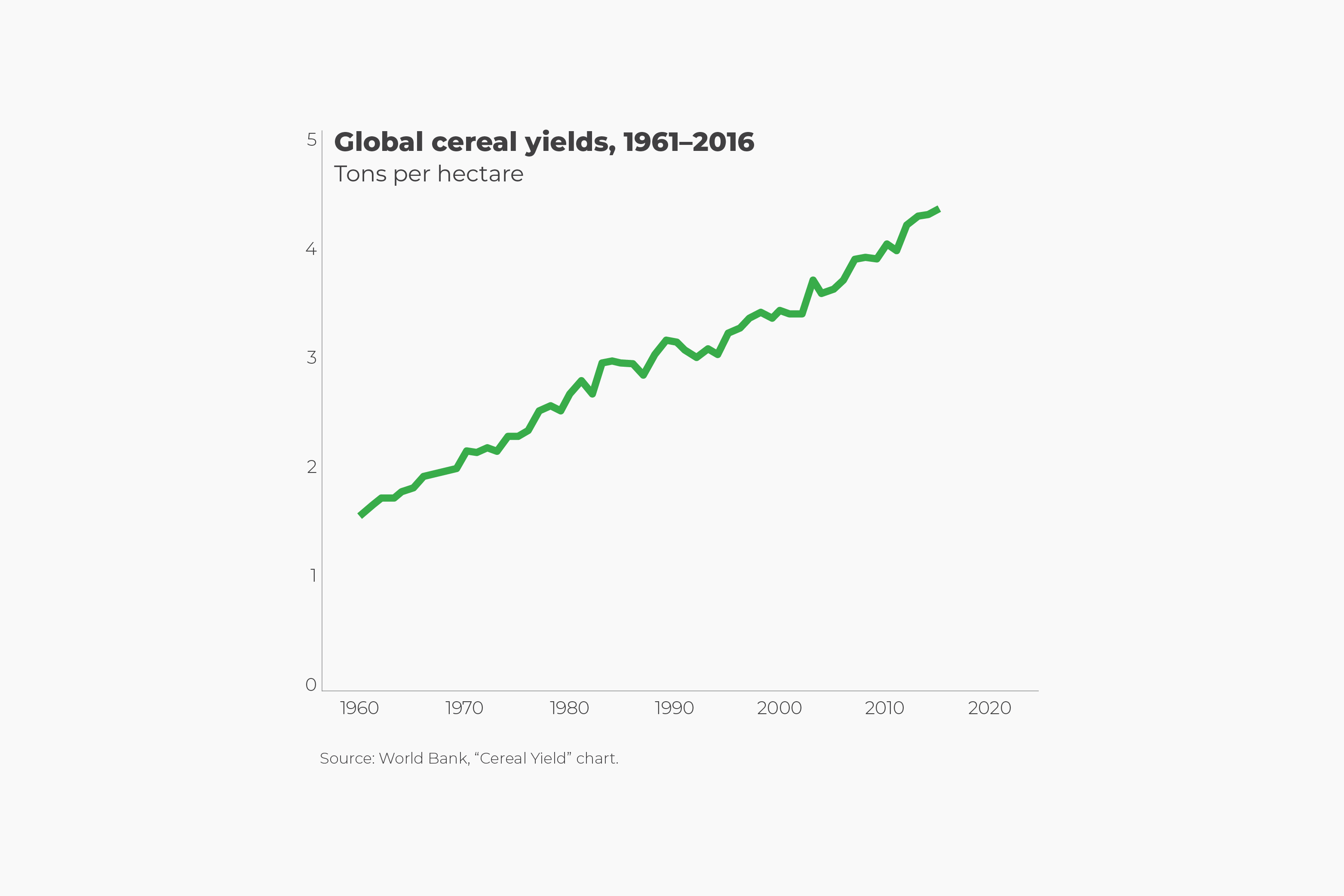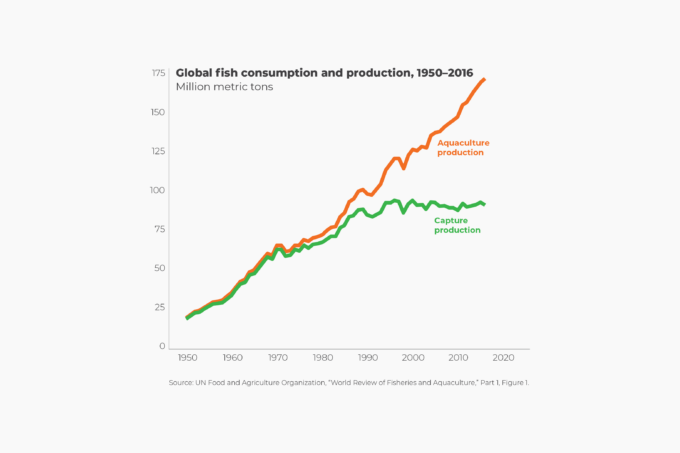Farmers have always worked hard to boost their crop yields. Although estimates vary considerably, one historian concluded that farmers in the Roman Empire managed to coax from their fields an average across Italy of 540 kilograms (1,190 pounds) of wheat per hectare (2.5 acres) in the first century CE.
By the 16th century, farmers in England had nearly doubled annual yields to just over a metric ton of wheat per hectare. Average English wheat yields by 1800 rose 1.5 metric tons, increasing to nearly 4 metric tons per hectare in 1965. Corn yields in the United States averaged about 1.3 metric tons per hectare per year between 1866 and 1940. By 1960, yields rose to a bit more than 3.4 metric tons per hectare. In the 18th and 19th centuries, farmers in southern China produced an average of just over 2 metric tons of rice per hectare. In 1961, Chinese rice yields were still at 2 metric tons per hectare.
Grain yields began rising in the 20th century with hybridization, the synthesis of nitrogen fertilizer, improved pest and weed controls, and the development of genetically enhanced crops. Nobel Peace Prize laureate Norman Borlaug’s crop-breeding breakthroughs ushered in the Green Revolution in the 1960s and 1970s.
In 2018, British farmers harvested about 8 metric tons of wheat per hectare; U.S. corn yields averaged 11 metric tons per hectare; and Chinese rice yields were more than 7 metric tons per hectare. That year also saw record- breaking individual farmer yields in British wheat at 16.79 metric tons and U.S. corn at 11 metric tons per hectare. A new Chinese hybrid “super rice” yields more than 18 metric tons per hectare. As a result of ongoing progress, the World Bank reports that global cereal yields have increased from an average of 1.4 metric tons per hectare in 1961 to more than 4 metric tons per hectare in 2017.








